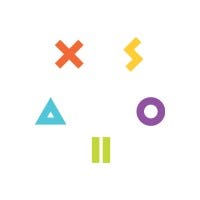Gameplay Incentives for a Digital Market
In today's market, there is more value in your game than just playing it. The use of achievements, items and even Steam trading cards can be used and are becoming important details for designers to know about.

For many older game designers, one of the more unusual changes that have impacted the Game Industry is having content to motivate someone to play your game separate from the game itself.

Achievements, trading cards, items and more don't seem all that important. Yet these seemingly unusual sales tactics can mean big bucks for developers if used properly.
Achievements:
When it comes to most of the tools that we're going to talk about today, they are commonly associated to being a part of a digital client like Steam, Origin etc. The reason has to do with having a unified profile that the person can showcase their accolades from.
With that said we'll start with achievements as they are not completely dependent on digital clients and can work on other games. Achievements are of course little marks or badges for completing specific tasks in your game and can be used in any video game: From Farmville styled titles all the way up to hardcore games like Dark Souls.
 Achievements are a great motivator to get someone to play your game.
Achievements are a great motivator to get someone to play your game.
Achievement design is way too big of a topic for this kind of post but for new designers, you just need to know of the two broad categories of achievements.
Progression achievements are akin to gold stars and are unlocked through just playing through the game. They are meant for casual gamers to get a sense of accomplishment and are the easiest ones to design.
Challenge achievements are those specifically designed to reward someone for doing something specific or mastering a certain action. These achievements are meant for expert players and as a secondary goal to go after.
As you can tell, progression achievements are a lot simpler to design than challenge ones. For convincing people to play your game through achievements, you just need to have any regardless of the type.
Items:
Our next category is currently exclusive to Steam but with the market share that Steam has at the moment, it's still important to consider. One of the ways that digital platforms have attracted an audience is by unifying both gamers and games so that they don't exist within a vacuum. And one of the best ways of showing that is having cross title promotions.
This is done by essentially partnering with a bigger title, most often a multiplayer game due to the size of their fan base and lifespan and then marketing unique items for that game for people who pre-order or play your game.
The more unique or limited availability, the more it will drive demand for those items and may get you sales on those items alone. One of the more famous examples of this would be the cross promotion Valve did for Team Fortress 2 being put onto the Mac platform. For a limited time anyone who played TF2 on a Mac would receive a unique item for their account.
 Team Fortress's personalization options lend it well for cross game promotions.
Team Fortress's personalization options lend it well for cross game promotions.
Not only did this drum up interest for TF2 but the items became very expensive and a part of the TF2 economy. With that said, that was an extreme example and not the norm for cross game promotions.
The best thing about doing cross game promotions like this is that it's really more about the item than it is about game design. You don't need to worry about your item breaking someone else's game when they will probably use it just for aesthetic purposes.
Besides Team Fortress 2, MOBAs like DOTA 2 or any of the recent Free to Play MMOs are also viable choices for doing promotions. Basically you want to look for a multiplayer game with personalization options to get the most bang for your buck.
Trading Cards:
Steam's latest mass success would have to be trading cards. The concept sounds simple: Playing a game will unlock part of a set of trading cards for that game, with the only way to complete the set is to either trade with someone or buy them from the marketplace.
What's great about trading cards is that they add value to your game without any additional design from you. Many developers simply use concept art lying around for their card design or you can go as far as designing unique art for them.
Trading cards have gotten so popular that they have become additional source of income for players and for you. Many people look at trading cards as a way of getting additional value out of your game or cutting the cost of buying it further while you receive the sale in the process.
 Trading cards don't require a lot of work and mean extra value for you and your consumers.
Trading cards don't require a lot of work and mean extra value for you and your consumers.
Items and trading cards are more popular than achievements these days as they add value to your game without you necessarily having to do more development. What makes them work so well is that by having your game be attached to another brand, it becomes attractive to people who would have not bought your game in the first place.
What ends up happening next can be one of two outcomes: Either the person simply plays your game for the items and stops. Or they enjoy your game so much that they become fans for your next title. Regardless, it's a copy of your game sold and a win-win.
The strangest feeling for designers today is that playing a video game is no longer the only value that can come from it. Being able to market your game with these incentives is becoming just as important as designing a great game and something that both old and new designers need to be aware of.
(Reprinted from the Xsolla blog)
About the Author(s)
You May Also Like













